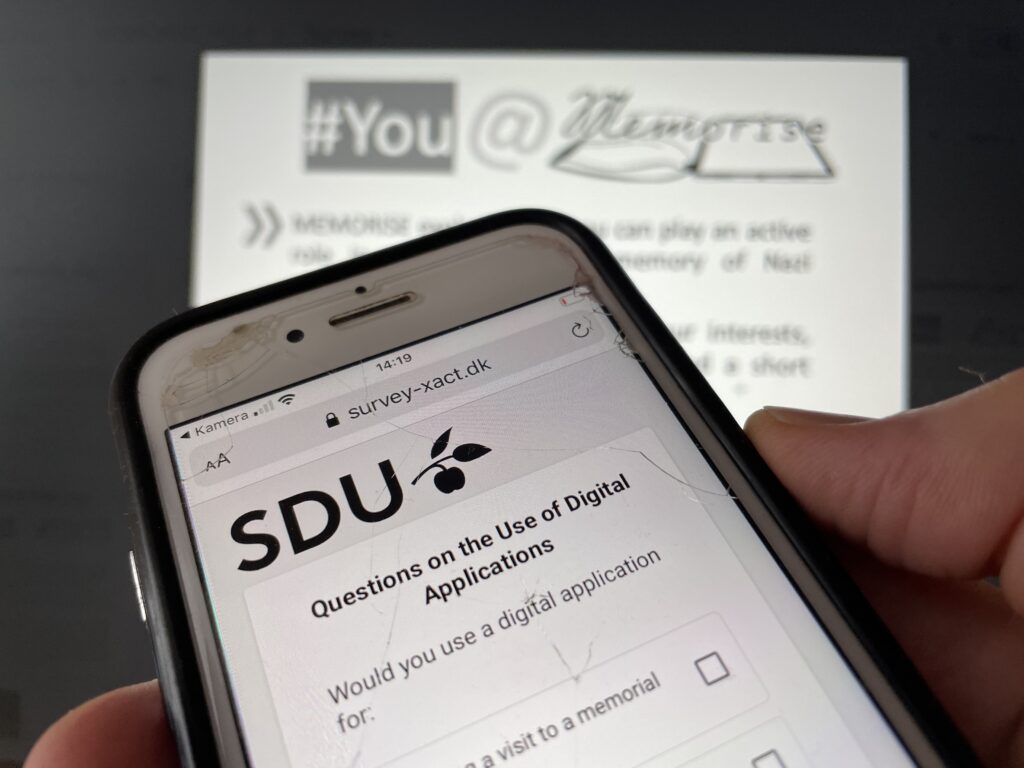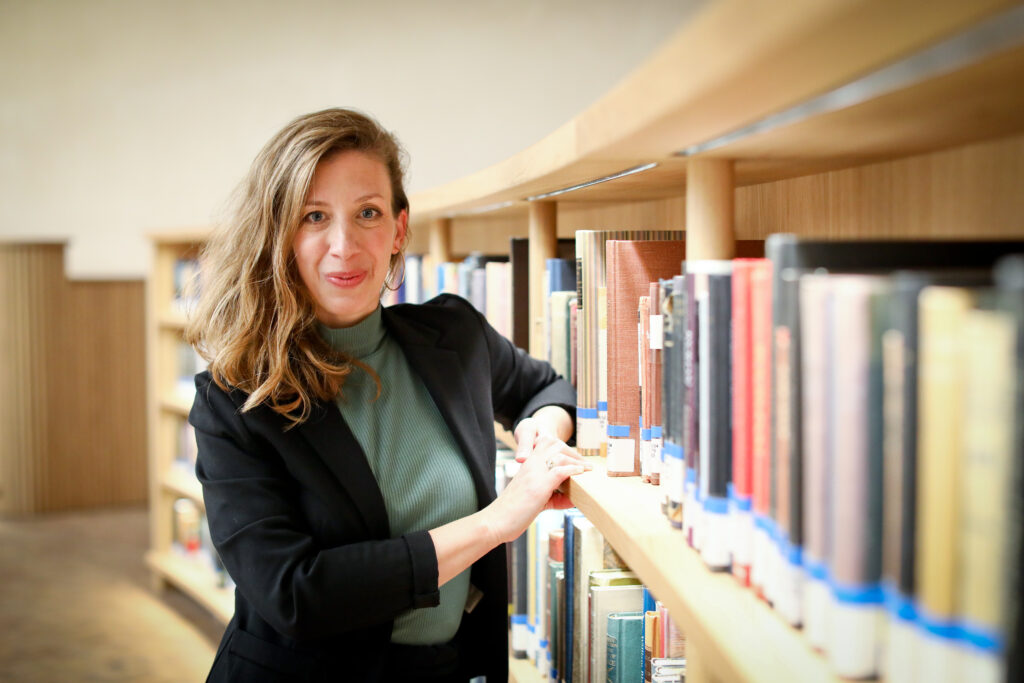
The MEMORISE project is conducting a survey to learn more about what future users expect from digital applications for engaging with the history of Nazi persecution. User participation and user feedback are central to research and development as practized in the MEMORISE project. The results of the user survey will help to improve the development of prototypes and will also shape educational guidelines and approaches.
We spoke to Esther Rachow, a PhD student at the Hebrew University in Jerusalem, who is responsible for user surveys and user testing with her colleagues from the Hebrew University and Radboud University. Esther talks about the potential impact of user surveys and why the MEMORISE project is curious to learn more about user responses.

The user survey can be accessed here:

Here is our talk with Esther:
Esther, What do we actually know about users of digital applications engaging with the history of the Holocaust and Nazi persecution?
Esther: Unfortunately, we don’t have any systematic research about user engagement with digital applications dealing with the history of the Holocaust and Nazi persecution that would give us an overview of how these applications actually enhance the user’s knowledge, their digital abilities, and needs.
Most existing research mainly focuses on evaluating quantifiable interactions or direct feedback and quizzes the user participates in while using an app or a platform. Those results, even though relevant for the development of new applications, need to be closely evaluated in relation to the specific parameters of the respective technological tool.
In order to be able to obtain more detailed and nuanced knowledge about users, we also need qualitative approaches.
Who are you targeting with your survey?
Esther: The survey is targeted at visitors, students, community activists, curators, educators, the staff of memorial sites and museums, teachers, researchers, and survivors and their families. We aim to reach out to all potential stakeholders who are either engaged in the development of digital methodologies, facilitate the use of the end product, or are the actual users themselves.
Why is it important to integrate user responses into the development of digital applications dealing with the heritage of Nazi persecution?
Esther: Digital platforms provide a variety of methods for interactive teaching and learning about the Holocaust and Nazi persecution that have the potential to create a deeper understanding of these events and influence how the Holocaust is understood today. At the same time, studies show that European millennials and members of Generation Z, though very interested in the history of the Nazi period, lack basic knowledge about this relevant chapter of the past.
We have to combine those two elements into our research by engaging with users, creators, and educators about the developmental process of digital applications. This is critical because in doing so, we will be able to create tools that can meet the cognitive and emotional needs of the users, and at the same time help to meet the educational goals of digital education of the history of the Holocaust and Nazi persecution.
What do you expect to learn about potential users, their interests, needs, and requirements?
Esther: We have to establish a new understanding of how contemporary learners process content in the digital space and how they connect it to today’s challenges. The specific challenges of teaching the history of the Holocaust and Nazi persecution are the temporal distance to the events themselves, the passing away of the generation of the survivors, and the controversy over the meaning of the Holocaust in light of other historical atrocities in contemporary history. In MEMORISE, we try to understand this historical shift through the lens of digital education and commemoration.
At this stage we are especially interested in learning more about users’ digital literacy, their previous historical knowledge, why they are interested in the history of the Holocaust and Nazi Persecution in general, and what specific topics, sources, and digital methods attract them and how they use digital tools. Furthermore, we are interested in defining the parameters for inclusive and diverse methodologies.
Will users continue to play a decisive role in the project? Will there be more surveys and user tests in the future?
Esther: At MEMORISE, the evaluation and testing takes place in different phases. Additional surveys and interviews can help us understand how much and what users have learned in comparison to off-line methods, how their emotional reaction to the content has affected their decisions on navigating the applications, what they used them for, and how they shaped their ethical understanding of the difficult visual and textual content with which they were confronted.
For that purpose, we apply participatory and interactive methods that involve general users and target audiences as well as potential stakeholders.
Why should people respond to your survey? How can they benefit from participating?
Esther: Anyone who cares about the preservation and continuation of the memory of the Holocaust and Nazi persecution, who is interested in learning more about themselves in relation to new technologies and historical study, and who wants to make an impact on the development of digital strategies for Holocaust education and the commemoration of Nazi persecution should participate in the survey.
Esther Rachow is a PhD candidate at the European Forum of the Hebrew University of Jerusalem where she researches new paradigms of Holocaust education in the digital age. Her work on the MEMORISE project focuses on evaluating and developing digital pedagogical methodologies, especially defining relevant educational and ethical guidelines.
Please help us improve the MEMORISE project. Click here and fill in the survey.



No responses yet